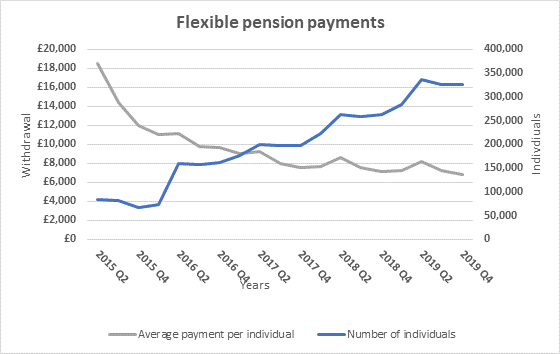Life insurance puts money in the hands of those who need it when a person dies. There are many reasons why this money might be needed. It’s not just for parents with young families. A need could arise at any age and the nature of that need could change as you get older. As such, regular reviews of your financial protection needs are essential.
If your income would stop upon your death, and you have people who depend on you financially, you should have life insurance cover. If you live with a spouse or partner and their earnings would also stop at death, they too should have insurance cover. However, if you do not have financial dependents, you may not have a need for life assurance.
Quantifying the need for life insurance
The life insurance needed to cover a loan is relatively simple to assess. You need enough insurance for the amount of the loan, and the cover should last for the time that the loan is outstanding. If you pay off some of the loan, you should be able to reduce the amount of cover earmarked for this purpose. However, if you take advantage of loan or mortgage repayment holidays as a result of Covid-19, you’ll need to review the cover you have in place as it may no longer be sufficient, unless you subsequently make overpayments. Most people also need insurance cover to replace their income if they were to die. The same principles apply but the calculations are a little more complicated.
Example – calculating needs
David and his wife Penny have a son of five who is about to start school. They have decided to send him to a fee-paying school and expect him to be there until he is 18. David and Penny are now considering life insurance to ensure that the fees could continue to be paid for the next 13 years. The first thing to do is therefore to quantify the total cost of school fees over the next 13 years, taking inflation into account.
The approach to insuring other needs is roughly the same. For example, you could calculate how much your family would need to cover the general household and other expenses, and how long they would need the funds for.
You can arrange for life cover to pay out a series of annual amounts over a set period, which is a simple approach to replacing an annual income, but most life cover pays out a lump sum. If you want a lump sum to provide £1,000 a year for 10 years, you would need life cover of about £10,000 because even if you invested a lump sum it wouldn’t have long to grow before you needed to spend it. If you needed the income for 20 years, however, you might only need about £18,500 because you could invest some of this for the longer term and benefit from growth and income.
It is sometimes hard to work out how much life cover you would require for your family, because of the difficulties of assessing your family’s needs after one or both parents have died. Your usual pattern of expenditure provides a good starting point for these estimates. Then you would have to consider the other costs that might be involved, like childcare. It can be especially difficult to assess the potential financial impact of the death of a parent who spends most of their time looking after children and the household. A good starting point is to estimate the costs of buying in these services.
Over time, your circumstances will change. Children grow up and mortgages and other loans are repaid. Your income may rise or fall, stop and restart. The same goes for your expenditure. You may take on more debt. It’s therefore a good idea to review the amount of cover you have on a regular basis, to ensure that it is still appropriate for your needs and that you are not under or over-insured.
The Right Life Insurance Policies for You
Term assurance is the right sort of life cover for most types of family protection needs. It can provide insurance at the lowest cost for the period that it is required.
It is rare that you would need other types of life insurance for family protection, because they generally involve much higher costs than term assurance for comparable levels of cover. Whole of life assurance provides cover for the whole of your life, as the name implies, and its main use is in inheritance tax planning and provision for funeral expenses. Whole of life policies can have substantial investment values that you can cash in, unlike term assurance policies.
Term assurance is the simplest form of life insurance, working in a similar way to your home insurance. The policy will pay out if you die during the term, but if you survive to the end of the term, the contract simply ends and there is no pay-out.
The cost of term assurance varies considerably according to factors such as your age and state of health. The cost of 10-year term assurance for a 30-year-old is about a tenth of the same cover for a 60-year-old. A person’s state of health is also important; poor health could mean increased premiums or even the possibility that the individual cannot be insured. Although term assurance is a simple product, there are variations that suit different needs.
Types of term assurance
| Policy type |
Description |
| Level term |
These polices pay out a fixed sum if you die during the term of the policy. |
| Renewable or convertible term |
Some policies are renewable, so that you can extend them for an additional period of cover at the end of the term regardless of your state of health at the time, while others are convertible to a whole of life policy regardless of your health. These policies cost more than level term. |
| Increasing term |
Some policies have an element of inflation proofing. You either have the option to increase the cover from time to time by a set percentage or, in some cases, the amount of cover increases automatically by a set percentage, or perhaps the rate of inflation. These policies also cost more than level term assurance. |
| Decreasing term |
This is like level term, but the amount of cover reduces each year. Decreasing term is typically used to cover a liability that you expect to decrease year on year, such as paying school fees until a child reaches the age of 18. The cost of this cover is less than level term assurance because the overall amount of insurance provided over its lifetime is lower. |
| Mortgage Protection |
This is a type of decreasing term assurance, but the cover reduces in line with the outstanding capital on a repayment mortgage where you pay off some of the capital every month. The higher your mortgage interest rate, the more slowly the outstanding mortgage capital falls each year. It is important to ensure that the interest rate specified in the policy matches the mortgage it is intended to cover, or that the rate is higher than the interest rate you expect at any time during your mortgage. |
| Family Income Benefit |
These policies pay an annual sum if you die during the term of the policy and the payments continue until the end of the term. Family income benefit can provide a higher initial cover for a lower cost because it is effectively a form of decreasing term assurance.
Example
Mark has twin children, aged five. He wants to ensure that if he died, the family would be protected until the twins reach 21. He feels they would need £30,000 a year for this and takes out a family income benefit policy to cover the liability. If he were to die in year one, the policy would pay £30,000 a year for 16 years – a total of £480,000. If he were to die two years before the end of the term, it would pay £60,000 in total. |
Life cover from your employer or pension scheme If you are employed, you may well have life cover from your employer and you might want to take this cover into account when deciding how much insurance you need. However, you need to bear in mind that you will probably lose this cover if you leave your employer. At which point, you’d need to consider taking out additional cover.
Relevant life policies Employers can take out these policies on the lives of employees. They are not part of their pensions, but they have many of the same tax advantages.
Joint life policies There may be situations where you would want to take out a policy on more than one life. The policy could then pay out after both the insured people have died – this is sometimes used for inheritance tax planning. Alternatively, the policy might be arranged so that it pays out when the first of the insured people dies. This could be suitable for financially interdependent people, but would mean that the second person would no longer be covered by the policy after the first of the couple dies.
Ensuring the right people get the money
Generally, the best way to ensure that the proceeds of a life policy are paid to the people you intend to benefit is to arrange for the policy to be in a trust. Some types of trust give the trustees discretion or flexibility about how they distribute the benefits, but it is a good idea to get advice about this. If you die, the policy proceeds will be paid to the trustees and then the beneficiaries, not into your estate. This arrangement could save them IHT and should speed up the payment to the beneficiaries.
There are other ways to set up life policies. The person you want to benefit could take out the policy themselves – the so-called life of another basis. In some circumstances this can be a wise arrangement, especially if the potential beneficiary wants to be certain that the premiums on the policy are being paid. But mostly it is preferable to arrange for a policy to be in trust.
Covid-19 and life insurance
Many life insurance providers are reassuring those with existing policies that they will pay out in the event of a claim resulting from a coronavirus-related death. However, because each insurer has different terms and conditions, you should check your policy to ensure that pandemics are not excluded.
Applications for life insurance from new clients are being accepted, but if an applicant is currently experiencing Covid-19 symptoms, the insurer is likely to postpone processing their application until they have fully recovered. Telling an insurer that you are in a good state of health when you are not will invalidate your policy, meaning that it will not pay out in the event of a claim.
Please do give us a call if you wish to speak to one of our Financial Planners about your life insurance requirements. We have good relations with reputable providers and can possibly make preliminary enquiries with underwriting teams about certain conditions to gain an understanding of how an application may be considered.
This article is for general information and is not intended to be advice to any specific person.















